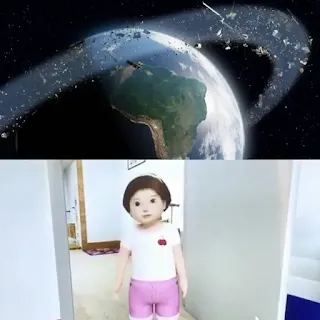The Japanese company Astroscale Japan announced that it will launch this month the first satellite dedicated to studying space debris in Earth's orbit.
The company wrote on the aforementioned moon project website: “This mission will pave the way for organizing commercial missions to remove space debris from Earth’s orbit.”
The company indicated that the new ADRAS-J satellite will be launched from the Rocket Lab space airport on the Mahia Peninsula in New Zealand, on February 19, and that the satellite, which is 1.2 meters high and 80 cm wide, is equipped with a group of small engines, which enables it to maneuver smoothly. Good for outer space and getting close to space debris.
The aforementioned satellite is supposed to contribute to studying parts of the Japanese H2A missile that was launched in 2009, and to take pictures of the debris of this missile and send them to Earth.
Astroscale Japan says: “This satellite mission is the first mission in the world to safely rendezvous with space debris.” If successful, the company will continue to develop the technologies necessary to remove space debris in Earth’s orbit, and in this regard it will cooperate with governments and commercial companies from various countries.
China,the world's first artificial intelligence child robot
Scientists from the Beijing Institute of General Artificial Intelligence (BIGAI) have unveiled a new robot described as "the world's first AI baby" named Tong Tong.
The small robot is characterized by the ability to perform several tasks, independently learn and explore its surrounding environment, in addition to expressing specific emotions, according to the developers.
Scientists unveiled “Tong Tong” at the Frontiers in Artificial Intelligence Technology Exhibition held in Beijing at the end of January.
Unlike robots that operate with artificial intelligence, “Tong Tong” can be operated within a virtual environment that can be interacted with, with the robot displaying tasks that reflect the intelligence and capabilities of a three or four-year-old child.
For example, the robot may respond to tasks that include adjusting a warped image frame. If the image is too high, the AI robot will find a chair so it can reach it without outside help.
The scientists explained that "Tong Tong" has the advantage of determining tasks independently, unlike chatbots such as ChatGPT or Bard from Google, which only respond to tasks set for them by human agents.
Some robots, such as Ameca (the most advanced humanoid robot in the world), also operate according to human commands, where instructions must be given to the robot to carry out.
According to BIGAI, Tong Tong is able to set new tasks for himself based on values and common sense similar to humans.
At the exhibition, BIGAI Director Xu Songchen unveiled the “Tong Test” that is intended to be a replacement for the Turing Test for artificial general intelligence.
While the Turing Test asks about a human's ability to determine whether he or she is talking to an artificial intelligence or a robot, the Tong Test looks at a much broader set of issues. This aims to develop artificial intelligence that can “learn and perform tasks in complex environments, driven by values and understanding causality.”
Tags:
technology



